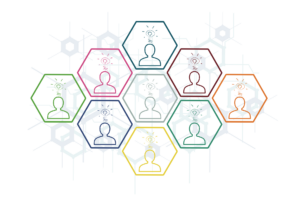Developing the Experimentation Culture—One Test at a Time
Experimentation is centered around innovation and is the foundation on which it is built. Yet just what does it take to build this culture into an innovation function and to stoke creativity? As mobile app developer Airship notes, experimentation is becoming more important in new product development. “With a lot riding on product decisions, product managers must validate assumptions, test new ideas and continually improve products. Rapid experimentation is their essential tool… What’s needed is a different set of shared behaviors, beliefs and values—a culture of experimentation.”
Rapid experimentation gives you the power of smarter decision-making, Airship notes, which helps you mitigate the risk of bad decisions and their impact on customer experience. But this is still based on a data-driven approach. In this culture, one can quickly test new product ideas, reduce wasted resources, and improve revenue by continually optimizing the customer experience based on user feedback.
Developing an experimentation culture differs from developing an experimentation strategy, the company notes. “An experimentation culture requires support from the executive level and all teams to experiment constantly and reflexively. There must be agreement that experimentation will lead to better results, and everyone must be fully behind it. An experimentation strategy is also important, but its focus is on defining the goals, KPIs, hypotheses and success criteria for experiments,” advises Airship.
In “5 Keys to Developing a Culture of Experimentation,” Airship further advises that:
- Get executive buy-in: To take root, a culture of experimentation needs a champion at the top. The most important buy-in is around data-driven decision-making and a willingness to embrace failure, and that buy-in needs to occur at the leadership level.
- Remove barriers to testing: Initiating and refining is impossible if you have to rely on developers alone. All of your employees must have access to tools they can use themselves.
- Empower everyone to test: In addition to making experimentation tools and technology readily available, the organization should also authorize and then encourage all employees to use the tools. A culture of experimentation empowers everyone to test hypotheses and test fast.
- Accept that some experiment hypotheses will fail: In a culture of experimentation, people see failure in experiments not as wasted tests, but as important opportunities for learning.
- Document learnings: Set up a centralized, visual reporting environment that provides real-time insights from all active experiments, as well as customer, channel and campaign data, all in one place.
Failure Has Its Benefits
All Things Insights recently looked at “How Insights Can Benefit from Failure.” No one actively looks to launch an unsuccessful product or venture. Yet failing can have its upside. There is a philosophy of thought in the business world that failure can make you stronger, and those learnings can help you succeed in the future. The “fail fast, fail often” mentality of startups, innovators, and market research is an accepted growth mindset, one where the belief is that any failure could be a critical step to success. While failure can indeed be discouraging, one can also profit from mistakes and capitalize on them in the future.
All Things Innovation explored the data-driven approach in, “Mapping Out the Data-Innovation Journey.” This year, in our latest Innovation Perspectives Report, we brought together a cross-section of innovation, insights and data science executives from a range of companies to discuss their goals, challenges, opportunities and more. In terms of changes transforming the research and development discipline, it should be noted that artificial intelligence is not far from the minds of these innovators. With the growth of AI systems and frameworks, innovation is becoming more of a data-driven world, one in which analytics, data science and insights are playing a more important role. AI may be just a new tool being tested and implemented but it’s an important one for innovation and product development.
The Advantages of Rapid Experimentation
Fostering a culture of experimentation within a corporate enterprise offers a multitude of benefits, propelling businesses towards innovation, growth, and a competitive edge. This can lead to enhanced decision-making, increased innovation, improved customer experiences, and a rise in healthy employee engagement. We asked Gemini for a breakdown of some key advantages:
- Data-Driven Approach: Experimentation relies on testing and gathering data. This replaces guesswork with concrete evidence, leading to more informed and data-driven business decisions.
- Reduced Risks: By testing ideas on a smaller scale before full rollout, businesses can identify and mitigate potential risks associated with new products, features, or marketing campaigns.
- Exploration and Creativity: A culture of experimentation encourages employees to explore new ideas, fostering a spirit of innovation that can lead to groundbreaking products and solutions.
- Faster Iteration: Experimentation allows for rapid testing and iteration. Businesses can quickly learn from successes and failures, refine their approach, and bring better solutions to market faster.
- Customer-Centric Focus: Experimentation allows businesses to test new ideas with real customers, ensuring they align with customer needs and preferences. This leads to a more satisfying and engaging customer experience.
- Adaptability and Agility: By continuously testing and adapting, businesses can remain agile and responsive to changing market trends and customer expectations.
- Empowerment and Ownership: A culture of experimentation empowers employees to take ownership of their ideas and contribute to the innovation process. This fosters a sense of purpose and increases employee engagement.
- Improved Problem-Solving Skills: Experimentation requires critical thinking and problem-solving skills. This ongoing process hones these skills within the workforce, leading to a more effective and adaptable team.
- Openness to Feedback: Experimentation necessitates a willingness to embrace both success and failure. This fosters a culture of learning where valuable insights are gleaned from every attempt.
- Continuous Improvement: The iterative nature of experimentation encourages a growth mindset, where continuous improvement is prioritized over achieving perfection on the first try.
Moving Beyond the Status Quo Through Continuous Learning
Building a culture of experimentation empowers businesses to move beyond the status quo. By embracing calculated risks, learning from experiences, and adapting based on data, companies can unlock a world of possibilities, achieve long-term success, and stay ahead of the curve in the marketplace.
In the insightful article, “How Can You Build a Culture of Experimentation?,” Amazon Web Service’s Tom Soderstrom observes that, “In my conversations with hundreds of enterprise executives worldwide, I have found that they like the idea of moving fast and innovating but find it difficult to accomplish within their corporate legacy and constraints. Innovating quickly is especially urgent in light of generative AI’s potential. But to increase innovation, you need to build a culture where experimentation is not just tolerated but the norm.”
Video courtesy of Columbia Business School
Contributor
-

Matthew Kramer is the Digital Editor for All Things Insights & All Things Innovation. He has over 20 years of experience working in publishing and media companies, on a variety of business-to-business publications, websites and trade shows.
View all posts






















































































































































































































